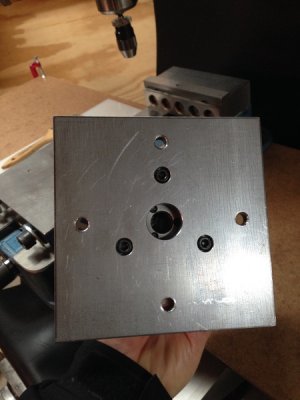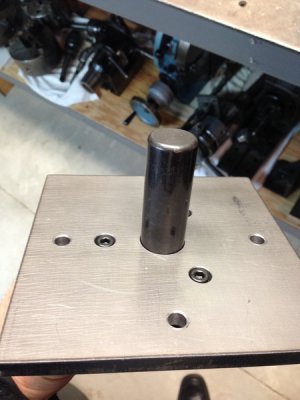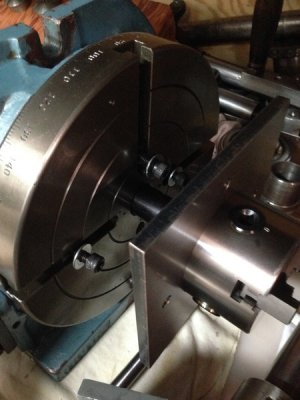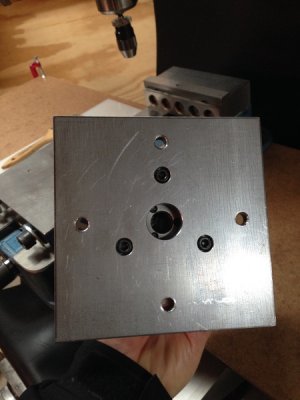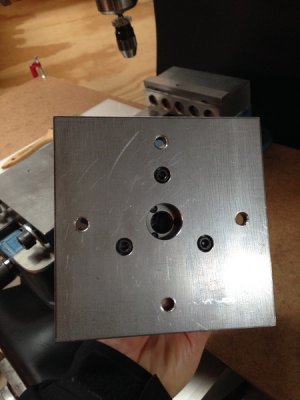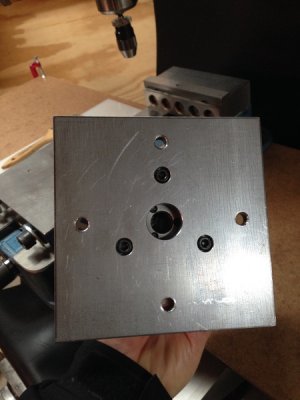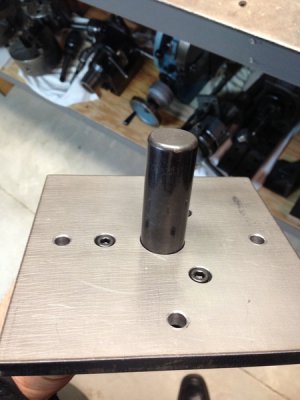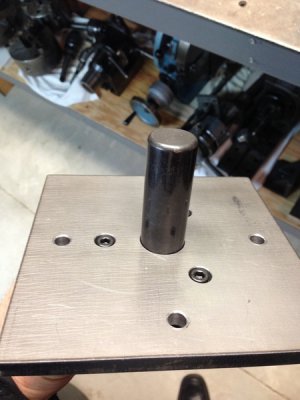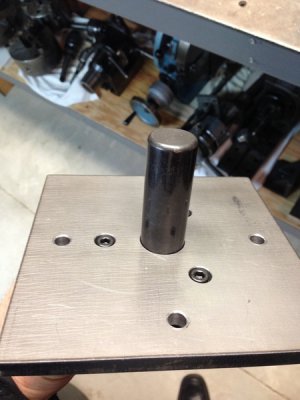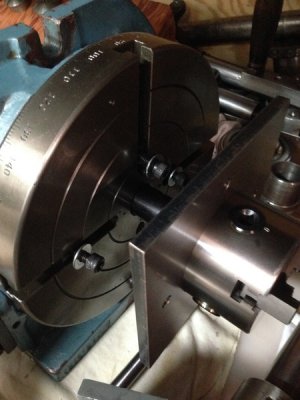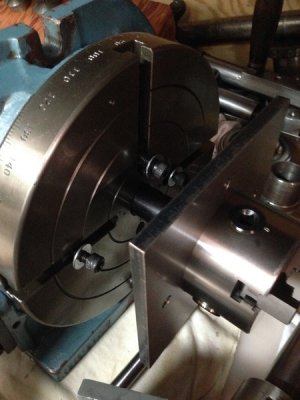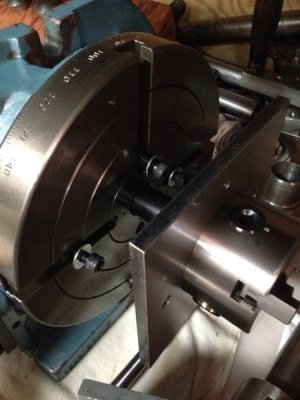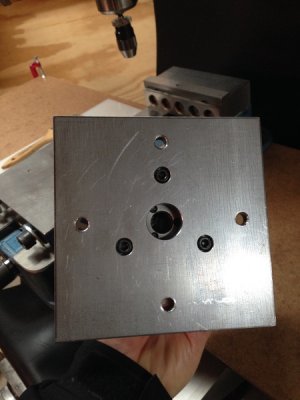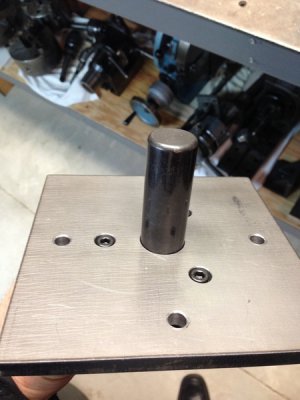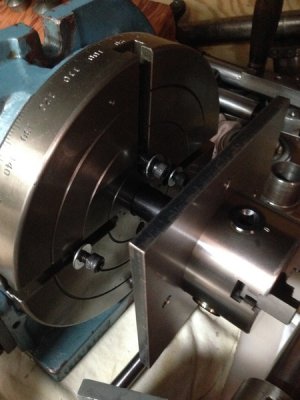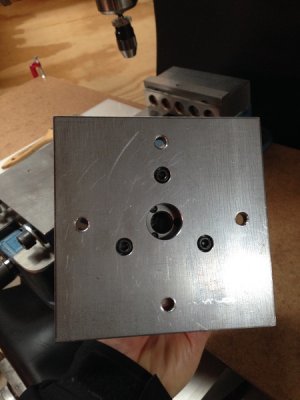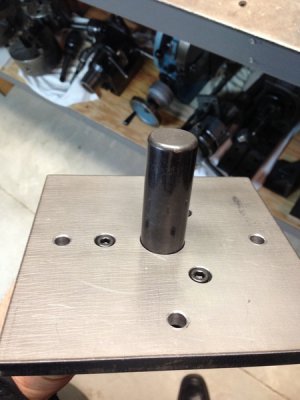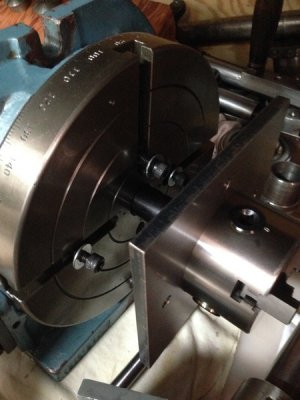The three jaw will not center your work accurately to the center of the RT unless you indicate the work to the table center and hold the chuck down to the RT with toe clamps or similar. The RT needs to be centered under the spindle before starting any work. Everything proceeds from there. If you offset the mill table to the center of the work in the inaccurate chuck, it will only be accurate in that one clock position. As soon as you index the RT you will have errors.
A rotary table, as purchased, is not really very useful. Using the T-slots and toe clamps and indicating the work is really slow and tedious, but sometimes necessary for odd shaped work or offset work. Look at dlane's very nice pallet build (above} for ideas on how to mount fussy work.
A lot of the work we do on the RT is symmetrically radial, like typical lathe work. What you really want to do is to chuck it up and start cutting. A three jaw chuck makes that very easy, but it has its own issues. First, the chuck has to be centered on the RT, and that takes time and effort. Second, three jaw chucks, by their construction, are not inherently accurate. Four jaw chucks are versatile, and are as accurate as you want to make them, by dialing the work in. But they are slower, especially if you also have to cobble together hold downs for the chuck to the RT as well. The shape and size of the work also matters. You are not going to put square stock in a 3 jaw chuck. You are not going to mount 12x12" work to a 8" RT by the edges, or fit it in a chuck.
Most rotary tables have a Morse taper center hole. With a bit of one time effort, we can build a centering fixture to center the RT and also to adapt chucks to the fixture. There is a very good set of videos by Randy Richard on how to do this:
There are six parts, this is part one...
I have chucks from my indexing head tooling that are 1-3/4", 8 TPI and are direct mounting, no back plates. They are small, 6" four jaw and 5" three jaw. If the Morse taper adapter for the table is made with an accurate thread, say 3/4-16, that stands above the table, and then an adapter is made from the 3/4-16 to the 1-3/4-8 chuck thread then the chuck adapter screws to the RT adapter which mounts to the RT, and the chuck can screw down tight directly to the RT surface. The faces of my chucks are less than 2" off the table. That is important. Headroom is compromised by rotary tables, adapters, chuck, work, and tooling. It is very easy to run out of headroom, even on a larger knee mill. You do not want a bunch of tall stuff stacked up...
Try for maximum adaptability and versatility in the fixtures you make for your RT. Also, try to achieve maximum speed and ease for changing setups using indicating and clamping aids. You will likely need to make all this yourself, but it will be a great learning experience and will be well worth the effort.



